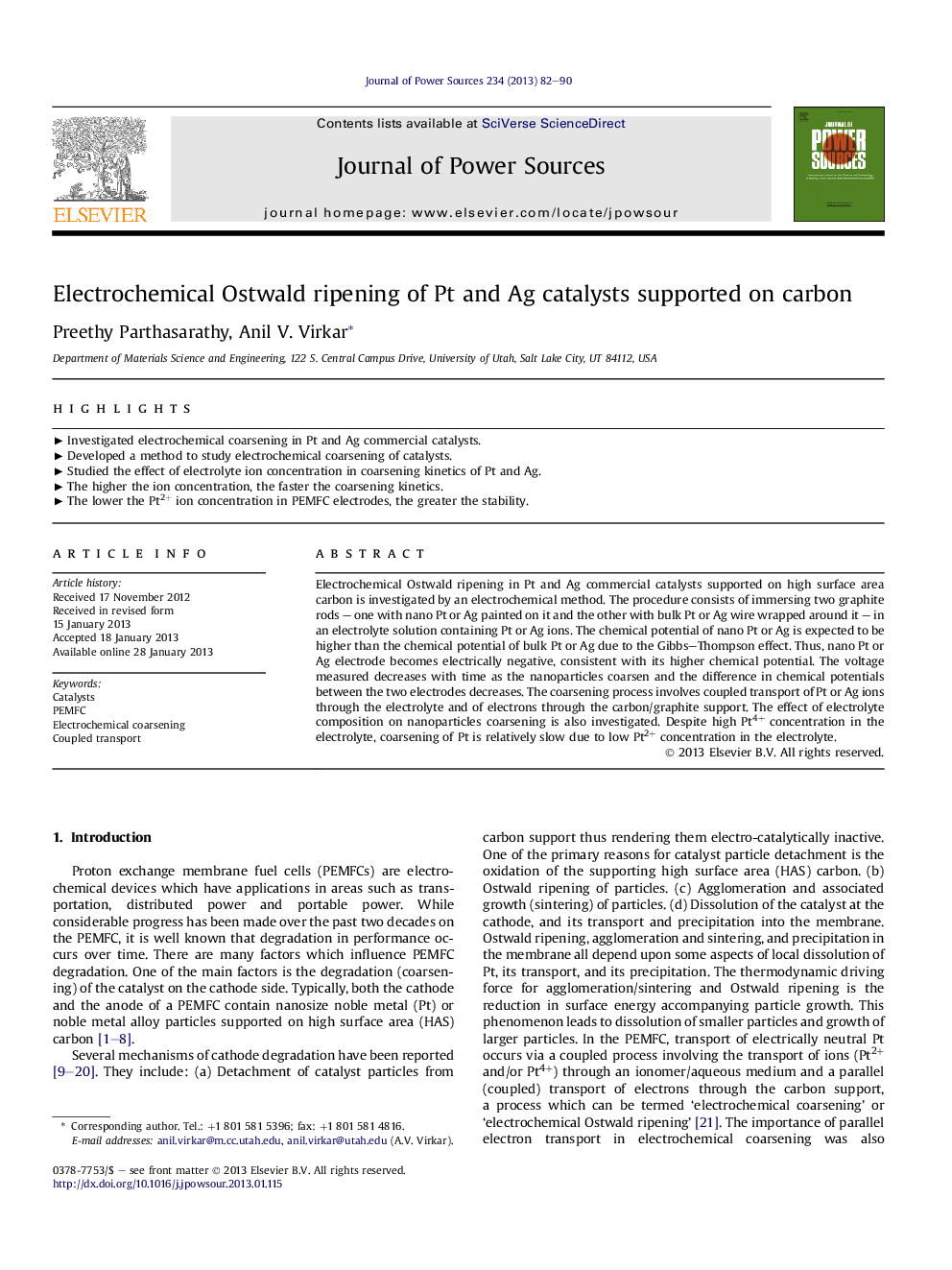| Article ID | Journal | Published Year | Pages | File Type |
|---|---|---|---|---|
| 1287942 | Journal of Power Sources | 2013 | 9 Pages |
Electrochemical Ostwald ripening in Pt and Ag commercial catalysts supported on high surface area carbon is investigated by an electrochemical method. The procedure consists of immersing two graphite rods – one with nano Pt or Ag painted on it and the other with bulk Pt or Ag wire wrapped around it – in an electrolyte solution containing Pt or Ag ions. The chemical potential of nano Pt or Ag is expected to be higher than the chemical potential of bulk Pt or Ag due to the Gibbs–Thompson effect. Thus, nano Pt or Ag electrode becomes electrically negative, consistent with its higher chemical potential. The voltage measured decreases with time as the nanoparticles coarsen and the difference in chemical potentials between the two electrodes decreases. The coarsening process involves coupled transport of Pt or Ag ions through the electrolyte and of electrons through the carbon/graphite support. The effect of electrolyte composition on nanoparticles coarsening is also investigated. Despite high Pt4+ concentration in the electrolyte, coarsening of Pt is relatively slow due to low Pt2+ concentration in the electrolyte.
► Investigated electrochemical coarsening in Pt and Ag commercial catalysts. ► Developed a method to study electrochemical coarsening of catalysts. ► Studied the effect of electrolyte ion concentration in coarsening kinetics of Pt and Ag. ► The higher the ion concentration, the faster the coarsening kinetics. ► The lower the Pt2+ ion concentration in PEMFC electrodes, the greater the stability.
